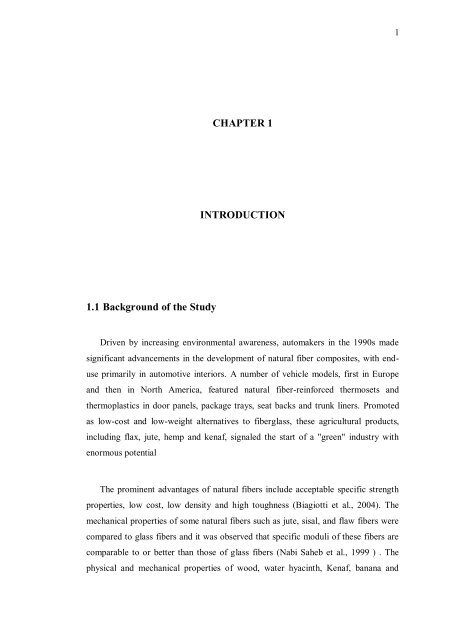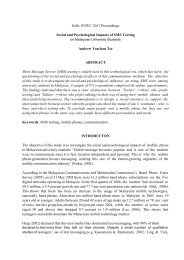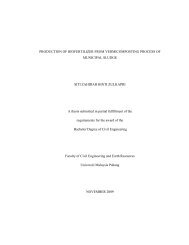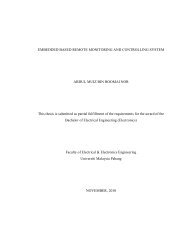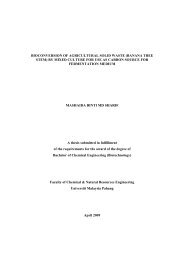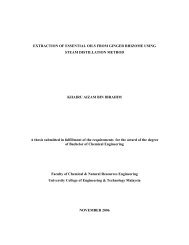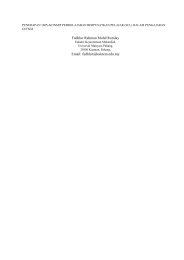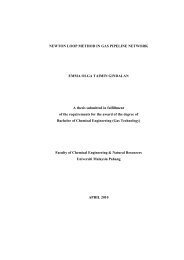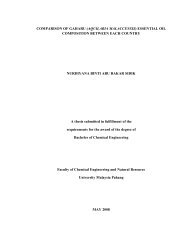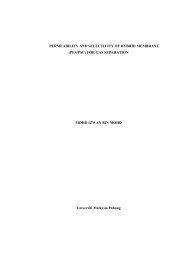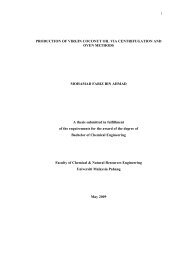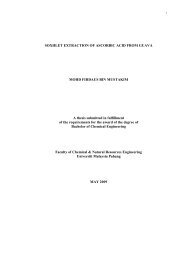CHAPTER 1 - Universiti Malaysia Pahang
CHAPTER 1 - Universiti Malaysia Pahang
CHAPTER 1 - Universiti Malaysia Pahang
Create successful ePaper yourself
Turn your PDF publications into a flip-book with our unique Google optimized e-Paper software.
1.1 Background of the Study<br />
<strong>CHAPTER</strong> 1<br />
INTRODUCTION<br />
Driven by increasing environmental awareness, automakers in the 1990s made<br />
significant advancements in the development of natural fiber composites, with end-<br />
use primarily in automotive interiors. A number of vehicle models, first in Europe<br />
and then in North America, featured natural fiber-reinforced thermosets and<br />
thermoplastics in door panels, package trays, seat backs and trunk liners. Promoted<br />
as low-cost and low-weight alternatives to fiberglass, these agricultural products,<br />
including flax, jute, hemp and kenaf, signaled the start of a "green" industry with<br />
enormous potential<br />
The prominent advantages of natural fibers include acceptable specific strength<br />
properties, low cost, low density and high toughness (Biagiotti et al., 2004). The<br />
mechanical properties of some natural fibers such as jute, sisal, and flaw fibers were<br />
compared to glass fibers and it was observed that specific moduli of these fibers are<br />
comparable to or better than those of glass fibers (Nabi Saheb et al., 1999 ) . The<br />
physical and mechanical properties of wood, water hyacinth, Kenaf, banana and<br />
1


